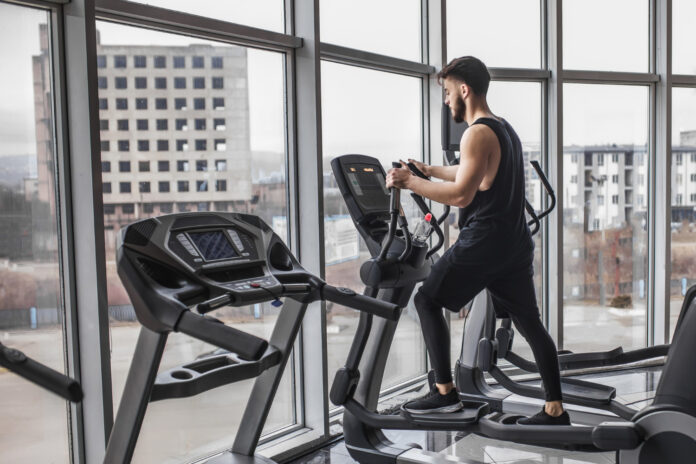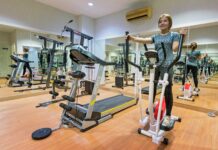Table of Contents
For many, the gym is a daunting place, especially when it seems like everyone but you knows exactly how to use those complex-looking machines. This fear can be even greater for those who are looking to ease their pain through exercise. However, cardiovascular machines can offer a safe and structured way for beginners and those with specific pains to not only manage their discomfort but also to step into a broader world of fitness and health. In this comprehensive guide, we’ll walk you through the ins and outs of using cardio machines to transform the way you think about pain management and exercise.
The Role of Cardio in Combating Pain
Before we break down the different machines, it’s essential to understand the connection between cardiovascular exercise and pain. Cardio, with its ability to boost endorphins, improve circulation, and increase the body’s pain tolerance, is a powerful tool for managing discomfort. Whether it’s chronic back pain, arthritic knees, or migraines, the right blend of aerobic activity can work wonders.
The key is consistency. Regular cardio can help you build endurance, which may, over time, enable you to perform other activities that can lead to further pain relief. It also promotes the body’s ability to heal by providing nutrients and oxygen to tissues while also removing toxins and waste products.
Common Pain Types Requiring Cardio Exercise
Understanding the source of your pain is crucial in tailoring an exercise regimen that will be both effective and safe. Here’s a brief overview of some common conditions that can be alleviated or managed through the use of cardiovascular equipment:
- Back Pain: Engaging in low-impact cardio can strengthen the muscles that support the spine, improve posture, and reduce the likelihood of future pain episodes.
- Arthritis: Consistent movement can help preserve and improve joint function, reducing the stiffness and discomfort associated with arthritis over time.
- Headaches and Migraines: While cardio exacerbates head pain, it can relieve tension through the release of endorphins and by improving sleep quality.
- Fibromyalgia: Gentle, low-impact cardio, like walking, can help manage fibromyalgia symptoms by reducing pain and fatigue.
Navigating the Cardio Jungle: Cardiovascular Machines Demystified
Gyms can often feel like a jungle, with each cardio machine representing a different path you can take in your fitness journey. We’ll walk through the most common cardiovascular machines and break down their benefits for various types of pain. Whether it’s treadmills, stationary bikes, ellipticals, or rowing machines, there’s a path that’s right for you.
Treadmills: Step into Stride with Controlled Impact
Treadmills are synonymous with cardio and are widely famous for their simplicity and ability to simulate natural walking or running. They offer a controlled and cushioned surface to help reduce the impact on joints, making them ideal for those looking to start slow and individuals with hip or knee pain.
Proper Treadmill Usage for Pain Management
Start at a comfortable walking pace and gradually increase the speed or incline over time to challenge your cardiovascular system. Avoid holding onto the front rail or console, as it can disrupt your gait and lead to muscle strain or imbalance.
Stationary Bikes: Gear Up for a Low-Impact Ride
Stationary bikes can provide a substantial cardio workout with minimal stress to the joints. The upright and recumbent types cater to various levels of fitness and can be particularly advantageous for people with lower back discomfort.
Best Practices for Biking Pain-Free
Adjust the seat height so that your knee is slightly bent at the bottom of the pedal stroke. Maintain proper posture, with your back straight and core engaged. This form offers lower back support and prevents unnecessary strain.
Ellipticals: The All-in-One Pain Buster
Ellipticals combine the motion of running with cycling, giving a full-body workout without the impact. Their fluid, low-impact stride makes them excellent for those with arthritis or joint pain.
The Elliptical Flow for Pain Relief
Hold the handles lightly to work your upper body and maintain a smooth forward-and-backwards motion with your legs. Avoid going too fast, which can cause your hips to sway and potentially lead to back pain.
Rowing Machines: A Smooth Sailing Approach to Pain
Rowing machines offer an efficient upper and lower body workout with a focus on cardiovascular health. Their seated position and fluid motion make them suitable for individuals looking to avoid or relieve back pain.
Smooth Rowing for a Sore Back
Ensure your back is straight throughout the rowing movement, engaging your core to protect your spine. Use your legs to push off, then lean back, and finally pull the handle to your chest in a coordinated, controlled motion to avoid straining your back.
Customizing Your Cardio Regimen to Your Pain
Personalizing your cardio workout to address your specific pain is critical to relieving it effectively. Here are some general tips for tailoring your regimen:
- Intensity: Start with low intensity and gradually increase as your body adapts. Listen to your pain threshold, and don’t push through sharp or severe discomfort.
- Duration: Aim for at least 20-30 minutes of cardio, 3-5 times per week. Longer durations can help with stress relief and improved sleep, which is known to reduce pain levels.
- Frequency: Consistency is critical. Regular, shorter workouts are better than sporadic, longer ones, especially when dealing with pain management.
- Variety: Incorporate a mix of machines and activities to prevent overuse or adaptation and to stimulate different muscle groups.
Real-Life Stories of Cardio and Pain Relief
To put these strategies into perspective, consider the experiences of those who have successfully used cardio machines to manage their pain:
- Samantha’s Back Pain: After struggling with lower back pain from a sedentary job, Samantha integrated weekly rowing sessions into her routine, which dramatically reduced her discomfort and improved her posture.
- Michael’s Arthritic Knees: Michael, an avid cyclist, transitioned to a stationary bike to ease his knee pain, finding that the consistent, low-impact motion kept his joints mobile and his pain at bay.
Conclusion: Your Pain, Your Power, Your Cardio Path
Using cardio machines for pain management is not just about the workout; it’s about your resilience and determination to reclaim your life from the grip of discomfort. Each step, each pedal, each pull of the handle brings you closer to a life where your pain doesn’t dictate your every move. It’s your choice to take charge, and the gym is simply the path you tread to reach a brighter and healthier future.
Engaging With Your Journey Further
If you’re on the cusp of this new cardio adventure, this is just the beginning. Share your story, ask questions, or seek further advice in the comments. Your journey to discover the suitable cardio machine for your pain management could inspire others to take their first steps. After all, the most powerful resources we have are those we share. Good luck on your quest for a pain-free, more active life!





